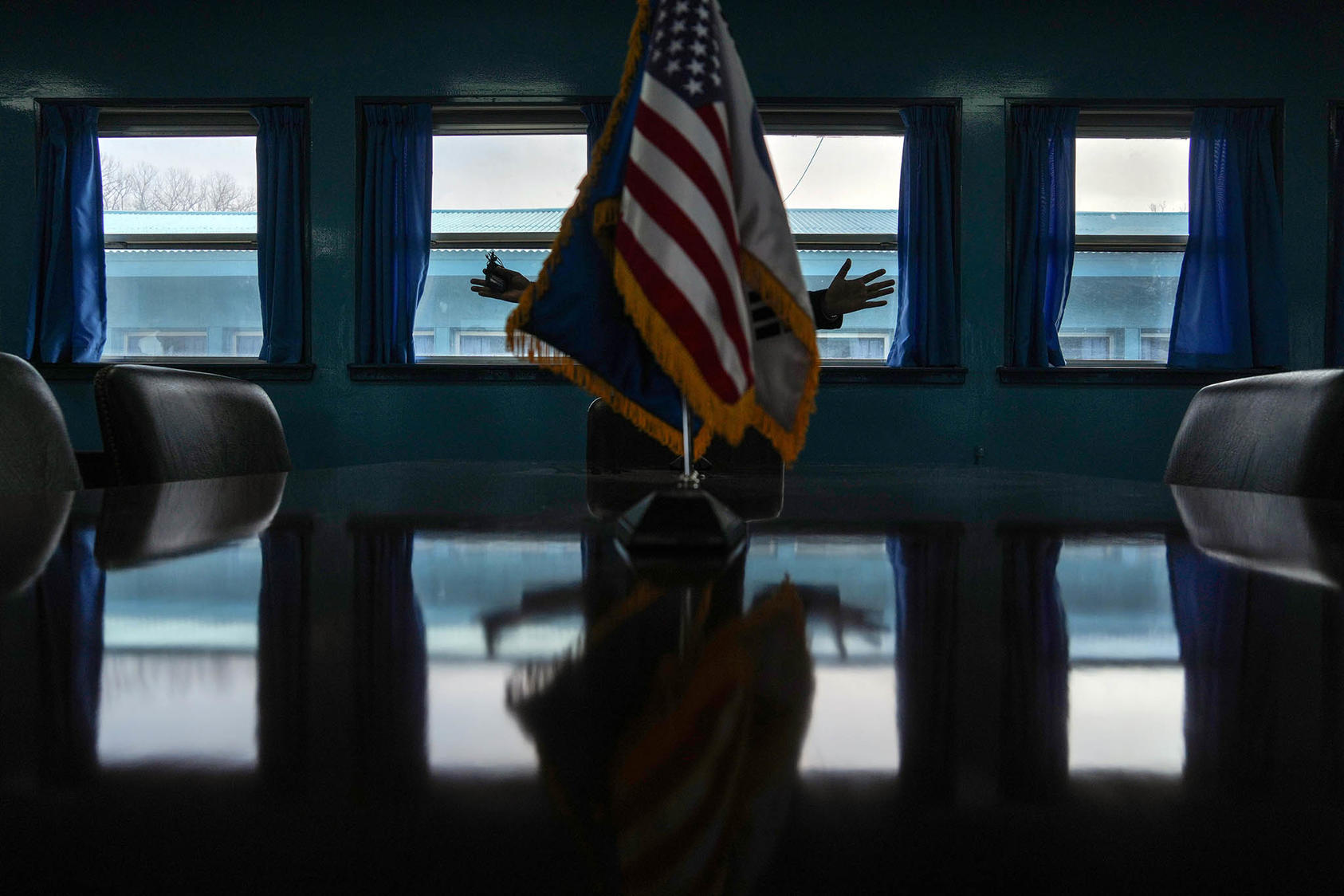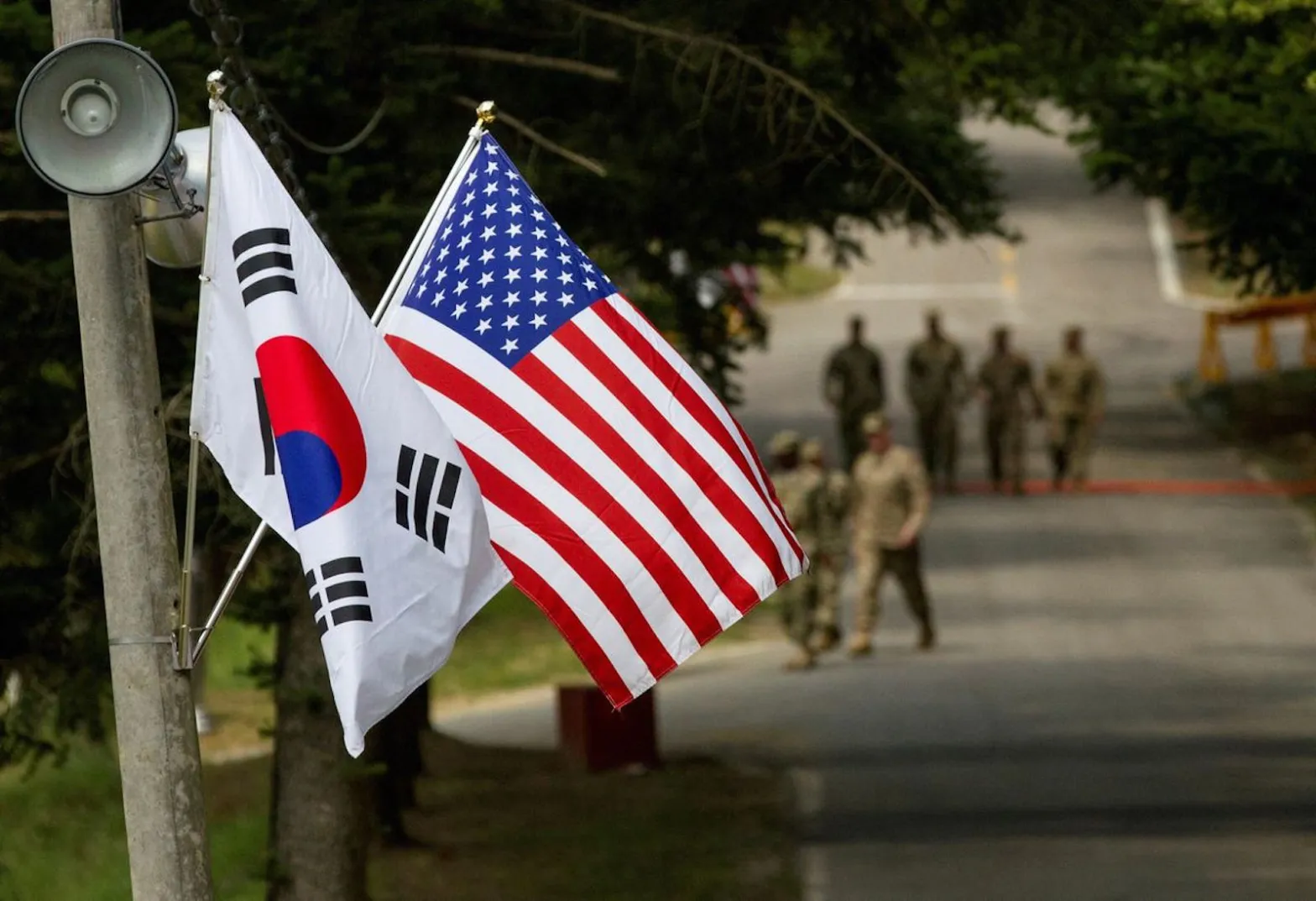Revisiting the Two-State System for Peaceful Coexistence on the Korean Peninsula
USIP
APLN member Jun Bong-geun argues that a system mitigating the competition for unification may promote peaceful coexistence between the two Koreas. Read the original article here.
The mounting tensions and risk of nuclear war that plague the Korean Peninsula today are typically attributed to a combination of North Korea’s aggressive nuclear posture and doctrine and the U.S.-South Korea alliance’s proactive deterrence countermeasures. However, while these factors are proximate and important, they themselves stem from a deeper, fundamental cause. The longstanding division of the Korean Peninsula has trapped the two Koreas in an endless unification competition to outcompete and take over one another, which drives the arms race and confrontational military postures against each other. Advancing a “two-state system” that mitigates the unification competition may help promote peaceful coexistence between South and North Korea and reduce the risks of conventional and nuclear war on the peninsula.
The Two-State System as a Necessary Condition for Peaceful Coexistence
During the Cold War, South and North Korea engaged in a constant and fierce competition for legitimacy and dominance to become the leading state to unify the Korean Peninsula. As each side denied the other’s right to exist as an independent state and pursued unification on its own terms, the Korean Peninsula continuously suffered from conflicts and military clashes.
After its establishment in 1948, South Korea prioritized membership in the United Nations to be recognized as the only legitimate state on the peninsula. North Korea, on the other hand, criticized separate U.N. membership as perpetuating the division. Instead, North Korea advocated to join the U.N. as a unified confederated republic with a single seat. North Korea also blocked South Korea’s bids for separate U.N. membership with the help of the Soviet Union and China.
However, the end of the Cold War gave South Korea a new opportunity. After normalizing diplomatic relations with South Korea in 1990, the Soviet Union declared that it would not veto South Korea’s entry to the U.N. China followed suit the next year. Afraid of being left out of the U.N., North Korea suddenly changed its position and joined the U.N. with South Korea, but separately, in September 1991.
The simultaneous admission of South and North Korea to the United Nations opened the era of the two-state system on the peninsula. Both countries were recognized internationally as legitimate, sovereign states under the U.N. Charter. Afterwards, expectations for peaceful coexistence of the two Koreas grew. As of May 2023, 192 countries have diplomatic relations with South Korea, 159 countries with North Korea and 156 countries have simultaneous diplomatic relations with both — which means that 156 countries recognize both Koreas as separate, independent sovereign states.
Between the two Koreas, however, the relationship was more complicated. In December 1991, the two countries signed the “Agreement of Reconciliation, Nonaggression and Exchanges and Cooperation between South and North Korea,” also known as the “Basic Agreement,” but it defined inter-Korean relations as “not a relationship between states, but a special interim relationship stemming from the process towards unification.” During the negotiations for the Basic Agreement, North Korea maintained its traditional nationalistic unification rhetoric and opposed the codification of state-to-state relations. As a result, the two countries could not redefine post-Cold War, inter-Korean relations as peaceful coexistence based on a two-state system.
As the post-Cold War era progressed and South Korea’s economy grew to outpace North Korea’s by 50 times, a crisis-ridden North Korea shut its doors tighter and launched a nuclear development program, partly out of fear of “absorption unification” by South Korea. This shift ended the brief opportunity for peaceful coexistence based on a two-state system. Although unification competition was less severe during Kim Jong Il’s reign (1994-2011), as inter-Korean dialogue and U.S.-North Korea nuclear negotiations progressed on and off, North Korea never completely stopped developing nuclear weapons out of the fear of absorption by the South.
As North Korea continued to develop its nuclear weapons after its first nuclear test in 2006, the peninsula entered another phase of unification competition, but now with the threat of nuclear use. North Korea’s nuclear armament posed an existential threat to the South, which caused Seoul, mostly under conservative administrations, to respond with a massive military build-up, a preemptive strike principle against North Korea’s nuclear missiles, frequent requests for demonstrations of U.S. strategic assets and the launch of the U.S.-South Korea Nuclear Consultative Group. Today, with the two Koreas remaining trapped in the unification competition and U.S.-North Korea relations at a hostile standstill, intense security competition and arms racing between the two Koreas continue.
A two-state system would establish a legal and political framework that can help mitigate unification competition, facilitate peaceful coexistence and reduce security risks on the peninsula. Though experts have explored the two-state system in the past, public debates have been sensitive due to criticisms of the two-state system as anti-nationalist, anti-unification and anti-constitution, given the South Korean constitutional provision that claims the whole Korean Peninsula as its territory. However, in today’s environment where the risk of conflict, especially nuclear, is greater and the chances of unification are very slim, the two-state system is worth exploring seriously.
How to Build the Two-State System
First, both Koreas should organize their respective national policies around a two-state system. Of the two Koreas, South Korea, which has greater national power and higher international standing, should convene an inter-Korean dialogue for the two-state system as it did in 1991. When South Korea entered the U.N. together with the North and signed the Basic Agreement in 1991, it was ready to institutionalize a two-state system. Lee Hong-koo, the former minister of unification and prime minister who drafted South Korea’s still operative Unification Plan in 1989, recalled in 2015 how his government pursued the two-state system at the time in a column titled “Systemizing the Division.” South Korea’s National Community Reunification Plan prescribed the institutionalization of a two-state system on the peninsula that would allow the two Koreas to coexist and cooperate for a considerable period of time. This Korean version of Germany’s two-state solution led to the 1991 Basic Agreement and simultaneous membership in the U.N. Lee also argued that the two Koreas should relaunch the aborted project of the two-state system to reduce the risk of war.
Second, South Korea should utilize the Kim Jong Un regime’s recent abandonment of traditional nationalist and pro-unification rhetoric in favor of a state-centered stance as an opportunity to raise the two-state system to North Korea. At a party plenum at the end of 2023, Kim for the first time renounced unification as an explicit goal of North Korea’s inter-Korean policy, claiming that reunification is impossible. This announcement follows earlier signals that North Korea was viewing the South as a separate belligerent state. In 2018, North Korea abandoned traditional calls for unification and intra-national cooperation, and instead promoted “Our State First” and “Our People (North Koreans) First” slogans. Recently, the North Korean leadership unusually began calling South Korea by its official name, “Republic of Korea,” instead of the more commonly used “South Chosun” or “Puppet Regime.” In July 2023, North Korea drew attention again when its Foreign Ministry, rather than the agency in charge of inter-Korean affairs, announced a statement on the proposed visit of a South Korea businesswoman to the North. It remains to be seen whether North Korea is truly treating the South as a foreign state rather than a separated half. South Korea should still utilize this state-centered shift as an opportunity to build normal state-to-state relations, under the U.N. Charter and international law, for peaceful coexistence instead of unpredictable, emotional relations competing for unification and dominance.
Third, the two Koreas should conclude a Basic Treaty that codifies the two-state system while postponing unification until a permanent peace is reached. The new Basic Treaty would inherit most elements of the 1991 Basic Agreement, such as recognition of and respect for each other’s system, noninterference in internal affairs, nonaggression, no slandering and vilifying, and no sabotage and subversion of the other’s regime. More importantly, the new treaty should recognize each state’s full statehood, sovereignty and territorial integrity under its current control as in the 1972 Basic Treaty between the two Germanies. To ensure the international legal status of the Basic Treaty, it should be signed by the heads of the two Koreas, ratified by their legislatures and registered as an international treaty at the U.N. Secretariat in accordance with Article 102 of the U.N. Charter.
Fourth, in order to institutionalize the two-state system and peaceful coexistence on the peninsula, it is essential to secure the support of major stakeholder states, especially the United States. Lee, the former prime minister of South Korea, claimed that the failure of the two-state system to take hold in the early 1990s was due to the “failure of the then-hegemonic U.S. to provide international guarantees.” The United States and North Korea have agreed to work toward normalized relations in all previous nuclear agreements, including the 2018 Singapore Joint Statement, but they repeatedly failed to deliver on these commitments.
Negotiating both the Basic Treaty between the two Koreas and U.S.-North Korea diplomatic normalization will be extremely challenging. Nevertheless, the parties involved should explore these measures to help resolve the security dilemma resulting from unification competition between the two Koreas and to achieve a nuclear-free, peaceful Korean Peninsula.
Image: A reporter gestures toward the South Korean side of the border, left, and the North Korean side, right, in Panmunjom, South Korea, on Feb. 7, 2023. (Chang W. Lee/The New York Times)


![[Interview] Accidental Clash on Korean Peninsula Could Touch Off Nuclear War](https://cms.apln.network/wp-content/uploads/2024/01/2217059957580461.jpeg)

